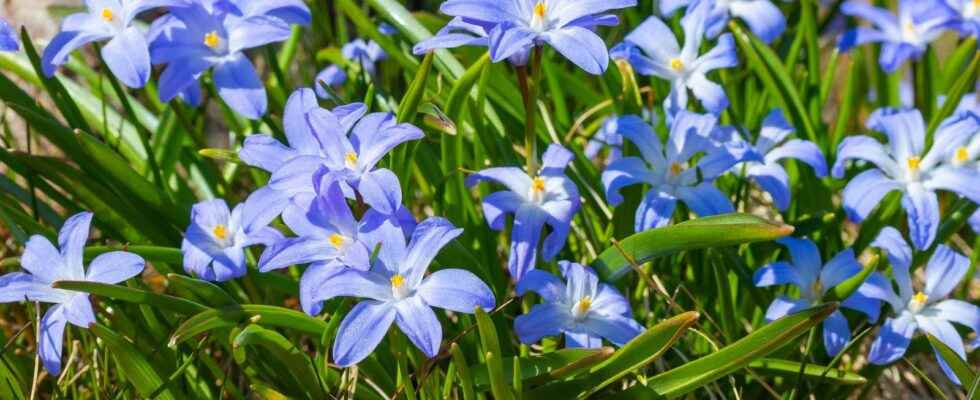This small perennial bulb, with early flowering, offers small starry flowers of color blue, pink or purple, depending on the variety. From the month of February, enjoy the chionodoxas, original and without special maintenance. They ask to be known.
Appellation
Also called Snow Glory (Chionodoxa), it is a member of the Liliaceae family (Liliaceae).
Botanical description of chionodoxa
It is a small spring bulbas the crocusthe tulip or the hyacinth. Small, it measures about 1.5 cm. It flowers from February to April. Flowering is ephemeral because, once in bloom, the chionodoxas only bloom for two weeks. It develops small linear green leaves as well as beautiful flowers in the shape of astarpurple or blue.
There are several species of chionodoxa:
- forbesiisynonym of Chionodoxa luciliae : variety ‘Pink Giant’, with pale pink flowers, ‘Alba’, with pure white flowers and ‘Blue Giant’, with blue flowers with a white heart;
- girlsynonym of Chionodoxa cretica : blue flowers with a white centre, nana cannot stand winter humidity so it is better to grow them under cover;
- sardensis : light blue flowers.
They all look alike, both in terms of color, foliage and height.
Origin of Chionodoxa
These bulbs are native to the forests and mountainous plateaus of Crete, Turkey and Cyprus.
Cultural requirements of chionodoxa
Prefer to install them in a classic soil, fresh and well drained, exposed to the Sun. The small bulbs are planted in fall, from September to November. Planted 5 cm deep, point upwards, on a bed of sand or gravel for the drainagekeep them at least 10 cm apart.
Maintenance is minimal. Leave them in the ground. Hardy down to -25°C, Glories of the Snows will tend to naturalize and form magnificent blue carpets. Thus remained in the ground, they will regenerate during their period of dormancy to offer more flowers the following year. You can divide the bulbils to replant them in the garden. This is done in summer and it will be necessary to wait until autumn to replant them.
Use of chionodoxa
Create blue carpets in a lawn or to color the foot of a tree. In a massif, combine them with narcissus, grape hyacinth and meleagris fritillaries to compose a patchwork of colors. Alone or accompanied, in pots or in a planter, chionodoxas will awaken a balcony or a Terrace. In a clump of perennials, install them in the foreground to appreciate their luminous flowering which does not exceed 20 cm in height. In a rocky garden or a rockery, the chionodoxas are of the most beautiful effect by marrying with the mineral. Pick a few stems and put them in a vase to bring a air of spring in your home.
You will also be interested
Interested in what you just read?
